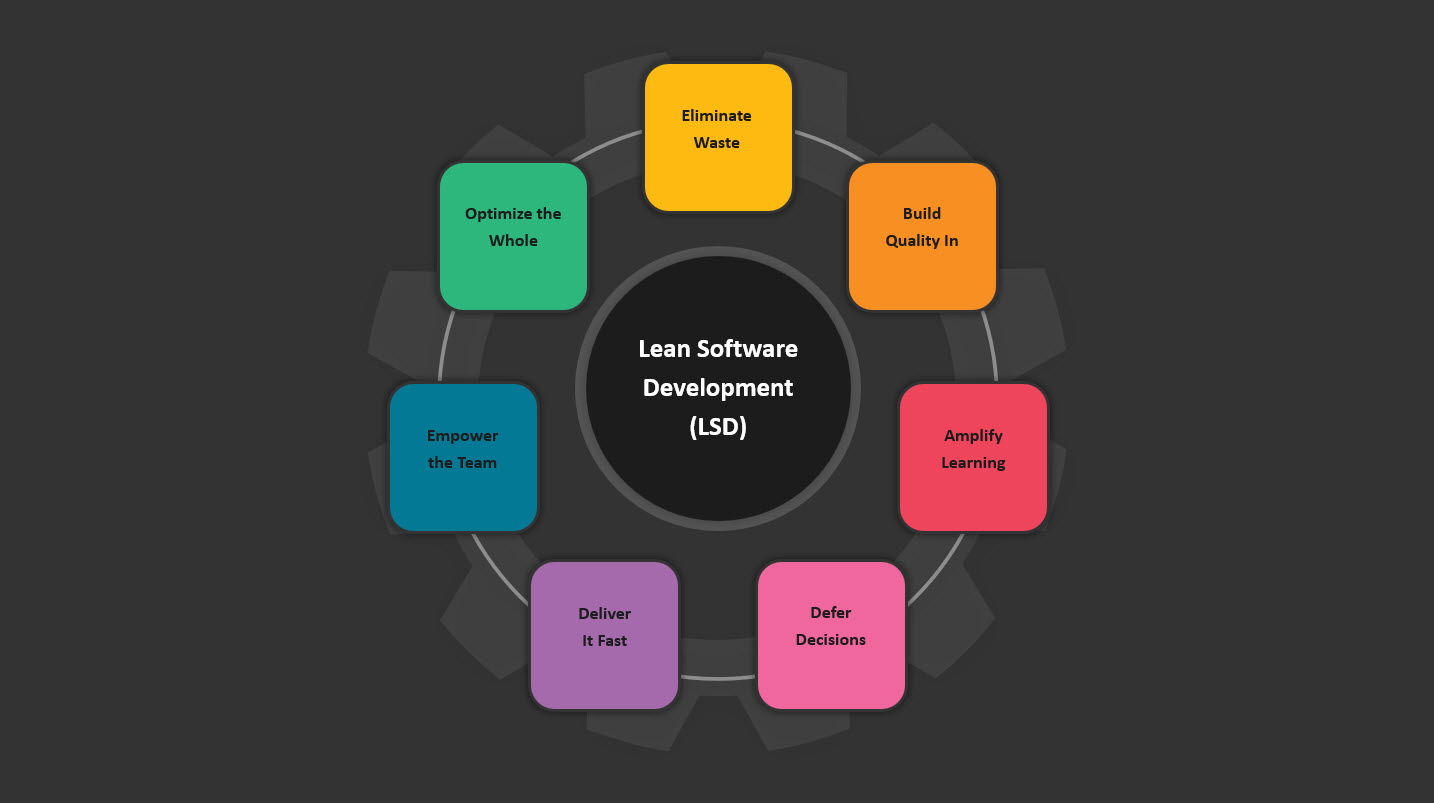Table of Contents
Lean Software Development (LSD) is an Agile methodology that focuses on delivering value to customers while minimizing waste. LSD originated from the Lean Manufacturing approach developed by Toyota in the 1950s, which emphasized continuous improvement and the elimination of waste in manufacturing processes.
Unlike other Agile methodologies such as Scrum or Kanban, Lean Software Development places a strong emphasis on customer value and minimizing waste. It also incorporates principles and practices from Lean Manufacturing, such as continuous improvement and visual management.
One of the key principles of LSD is to eliminate waste, which includes any activity that does not add value to the customer. This can include unnecessary documentation, overproduction of features, and defects in the code. By eliminating waste, LSD aims to improve efficiency and reduce costs.
Another principle of LSD is to amplify learning, which involves gathering feedback from customers and using it to improve the product. LSD emphasizes continuous learning and improvement, which is achieved through practices such as continuous integration and delivery.
Lean Software Development differs from other Agile methodologies in its approach to decision-making. The principle of “defer decisions” encourages teams to delay making decisions until more information is available. This allows for greater flexibility and adaptability in the development process.
In terms of practices, LSD incorporates many of the same techniques used in other Agile methodologies, such as iterative development and self-organizing teams. However, it also emphasizes visual management, which involves using visual tools such as Kanban boards to track progress and identify bottlenecks.
Now, let’s take a look in more detail at what the Lean Software Development methodology is about.
Principles of Lean Software Development
Lean Software Development is based on seven principles that guide software development teams in delivering high-quality products efficiently.
These principles are:
- Eliminate Waste: This principle focuses on reducing waste in the development process by identifying and eliminating any activities that do not add value to the customer. Examples of waste include unnecessary documentation, redundant code, and unused features.
- Build Quality In: This principle emphasizes the importance of building quality into the product from the start. Teams should focus on developing high-quality code and testing it thoroughly to prevent defects from occurring.
- Amplify Learning: This principle emphasizes the importance of continuous learning and improvement throughout the development process. Teams should gather feedback from the customer, use it to refine products, reflect on their performance, and identify areas for improvement.
- Defer Decisions: This principle encourages teams to delay making decisions until they have gathered sufficient information. This allows for greater flexibility and adaptability in the development process and reduces the risk of making costly mistakes.
- Deliver it Fast: This principle focuses on delivering value to the customer quickly and efficiently. Teams should prioritize the most important features and aim to deliver them as quickly as possible while maintaining quality.
- Empower the Team: This principle involves giving the team autonomy and resources they need to make decisions and solve problems. This can include providing training, tools, and support as well as fostering a culture of collaboration and innovation.
- Optimize the Whole: This principle encourages teams to take a holistic view of the development process and consider how each part of the process affects the overall outcome. This involves identifying and addressing bottlenecks, coordinating with other teams, and considering the impact of decisions on the entire project.

Practices of Lean Software Development
Lean Software Development incorporates a range of practices that help development teams to implement its principles effectively. Three common practices used in LSD are continuous integration, continuous delivery, and visual management.
Continuous integration involves regularly merging code changes into a shared repository and running automated tests to ensure that the changes are functional and do not cause any conflicts. This practice helps to identify defects early in the development process and enables teams to fix them quickly. Doing so helps to build quality into the product from the start, which supports the principle of “Build Quality In.”
Continuous delivery involves automating the process of building, testing, and deploying code changes. This practice helps teams to deliver features to customers quickly and efficiently, which supports the principle of “Deliver it Fast.” It also helps to minimize waste by reducing the time and effort required to manually deploy changes.
Visual management involves using visual tools such as Kanban boards to track progress, identify bottlenecks, and visualize the flow of work. This practice supports the principle of “Optimize the Whole” by providing teams with a holistic view of the development process. It also supports the principle of “Empower the Team” by giving team members visibility into the status of the project and enabling them to collaborate effectively.
By incorporating these practices into their development process, LSD teams can deliver high-quality products efficiently while also fostering a culture of continuous learning and improvement.
Benefits of Lean Software Development
Lean Software Development offers a wide range of benefits to software development teams. By adopting the principles of LSD, teams can eliminate waste, continuously improve their process, and empower their team members, resulting in faster time-to-market, improved quality, and greater customer satisfaction.
One of the key benefits of LSD is that it enables teams to deliver products to market more quickly. By focusing on delivering value to customers and eliminating activities that do not contribute to that value, teams can reduce the time it takes to develop and release software. This can be particularly important in competitive industries where being first to market can be a significant advantage.
Another benefit of LSD is improved quality. By building quality into the product from the start, teams can reduce the likelihood of defects and errors. Continuous integration, continuous delivery, and other LSD practices help teams to identify and address defects early in the development process, reducing the cost and effort required to fix them later on.
Additionally, LSD can help to increase customer satisfaction. By focusing on delivering value to customers and continuously improving the development process, teams can develop products that better meet the needs of their users. This can lead to higher levels of customer satisfaction and increased loyalty.
One example of a company that has successfully used LSD is Toyota. The company has been using the principles of LSD, which they call the Toyota Production System, in their manufacturing process for decades. By reducing waste, focusing on continuous improvement, and empowering their employees, Toyota has been able to produce high-quality cars efficiently, which has helped them to become one of the world’s leading automakers.
Another example of a company that has successfully used LSD is Spotify. The company has implemented the principles of LSD in its software development process, which has helped them to deliver new features quickly and efficiently. By continuously improving its development process and empowering its teams, Spotify has been able to stay ahead of the competition and maintain high levels of customer satisfaction.
Challenges of Lean Software Development
Implementing LSD, like any new approach, can present a range of challenges for software development teams. Some common challenges include resistance to change, lack of management support, and difficulty in measuring progress.
Resistance to change can be a significant challenge when implementing LSD. Team members may be comfortable with their current processes and may be resistant to changes that disrupt their workflow. To overcome this, it is essential to communicate the benefits of LSD clearly and involve team members in the process. By involving them in the decision-making process, teams can help to build buy-in and reduce resistance.
Another challenge is a lack of management support. Without the support of management, it can be challenging to implement LSD effectively. To address this, it is important to educate management about the benefits of LSD and how it aligns with the company’s goals and objectives. Demonstrating the potential ROI of LSD can help to secure management support.
Measuring progress can be difficult in an LSD environment. Traditional metrics such as lines of code and bug counts may not provide a complete picture of progress. Instead, teams need to develop metrics that reflect the principles of LSD, such as cycle time and lead time. By focusing on these metrics, teams can track progress and identify areas for improvement.
Conclusion
Lean Software Development offers a range of benefits to software development teams, including faster time-to-market, improved quality, and greater customer satisfaction. By adopting the principles of LSD and implementing common practices, teams can eliminate waste, continuously improve their process, and empower team members. However, implementing LSD can present challenges, including resistance to change and difficulty in measuring progress. Nevertheless, by addressing these challenges, teams can successfully implement LSD and realize its benefits. We encourage readers to explore LSD further and consider its potential benefits for their software development projects.
Have you used Lean Software Development? Please share your experience in the comments below.


5 comments
[…] Lean Software Development is the most preferred agile framework where the bare minimum version of the product needs to be released to the market, evaluated by users, and then added on functionality based on feedback from users. This concept is also called a Minimum Viable Product (MVP). […]
[…] Lean is a methodology that emphasizes the elimination of waste and the maximization of value. It is less focused on software development specifically and more focused on improving the overall efficiency of an organization. In contrast, DSDM is specifically designed for software development projects, with a focus on delivering high-quality software that meets the needs of end-users and stakeholders. […]
This info is priceless. Where can I find out more?
Great article! I appreciate the clear and insightful perspective you’ve shared. It’s fascinating to see how this topic is developing. For those interested in diving deeper, I found an excellent resource that expands on these ideas: check it out here. Looking forward to hearing others’ thoughts and continuing the discussion!
This article is fantastic! The insights provided are very valuable. Looking forward to the discussion!
Comments are closed.